In the quiet hum of his Texas studio, where creativity and craftsmanship converge, Gil Bruvel moves through space like a conductor guiding invisible currents. Around him, strips of wood shimmer under soft light, twisting and rippling as if alive. Each curve seems to breathe, each surface whispering stories about movement, balance, and the hidden structure of emotion.

For Bruvel, wood is not just a material. It’s a living medium that records time, tension, and energy. His sculptures appear caught mid-motion – a moment of fluidity frozen just long enough for admiration before it flows away.
New Horizons
Bruvel was born in 1959 in Sydney, Australia, but his creative roots took hold in the south of France, where he grew up surrounded by the light and landscapes of Provence. His father, a cabinetmaker and designer, taught him the language of wood early on – the smell of freshly cut timber, the way grain bends under a chisel, and the patience that fine craftsmanship demands.

By his teens, Gil was already studying furniture design and restoration, mastering traditional joinery before moving into painting and bronze sculpture. Yet even in those early works, you could feel that he was searching for something less rigid than form – something closer to rhythm and emotion.
When he eventually relocated to the United States in the 1990s, Bruvel carried that European precision with him, but it began to merge with a distinctly modern sense of movement. His art started to bend, fold, and shimmer, bridging craftsmanship and abstraction in a way few sculptors attempt.
Exploring the Flow Series
The sculptures that brought Gil Bruvel worldwide attention belong to his ongoing Flow Series. Built from hundreds of precisely cut and hand-dyed wood strips, each piece resembles a digital wave translated into organic form.
From a distance, you see a face, a figure, a pulse of energy, while up close, the details reveal themselves – thousands of small wooden sticks, individually shaped and arranged in gradients that suggest light moving across a surface. It’s both mathematical and intuitive, like music rendered in solid matter.
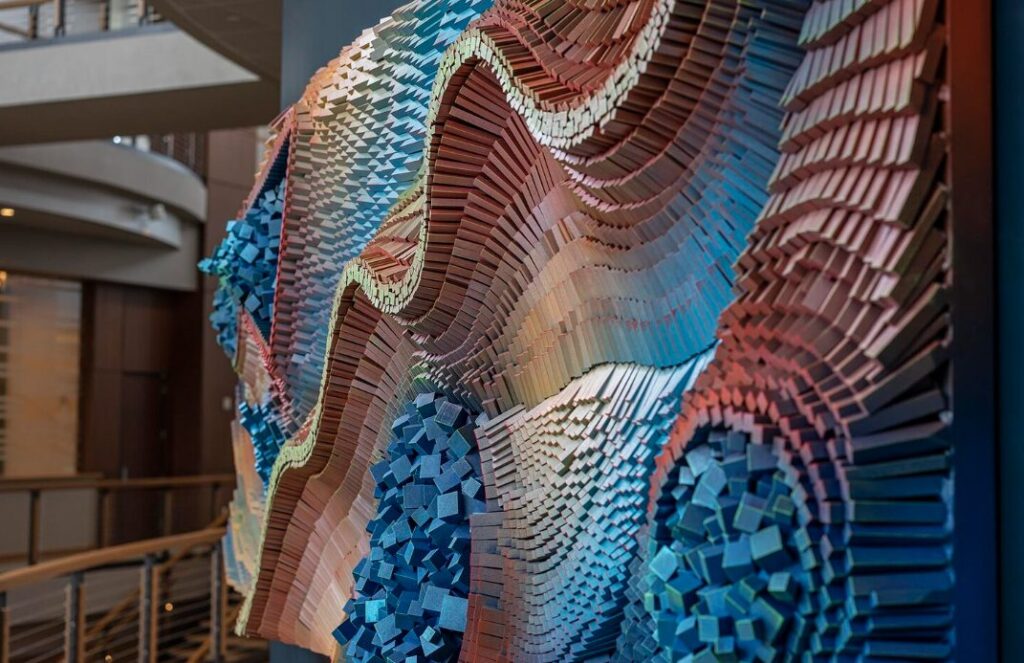
“I’m interested in what happens between inner stillness and outer energy,” Bruvel once explained. “The wood becomes a metaphor for that balance – it has structure and warmth, but it also has movement and flow.”
That “flow” is what gives his sculptures their hypnotic power. They capture the invisible – the rush of thoughts, the passage of time, the vibration between the spiritual and the physical.
Having Explored the Mesmerizing Qualities of the Flow Series, It Is Essential to Understand the Meticulous Craft Behind the Illusion
Though Bruvel’s works look effortless, they are intensely labor-driven. He begins with digital sketches, translating mental visions into 3D models that help him understand how each layer will interact. Then comes the long process of cutting wooden pieces – often maple or birch – into precise segments, each dyed with color gradients that shift across the form.
These strips are assembled like pixels, one by one, following the contours of a shape until the sculpture takes on life. The result is astonishing: a solid form that appears to be moving, bending, or dissolving into air.
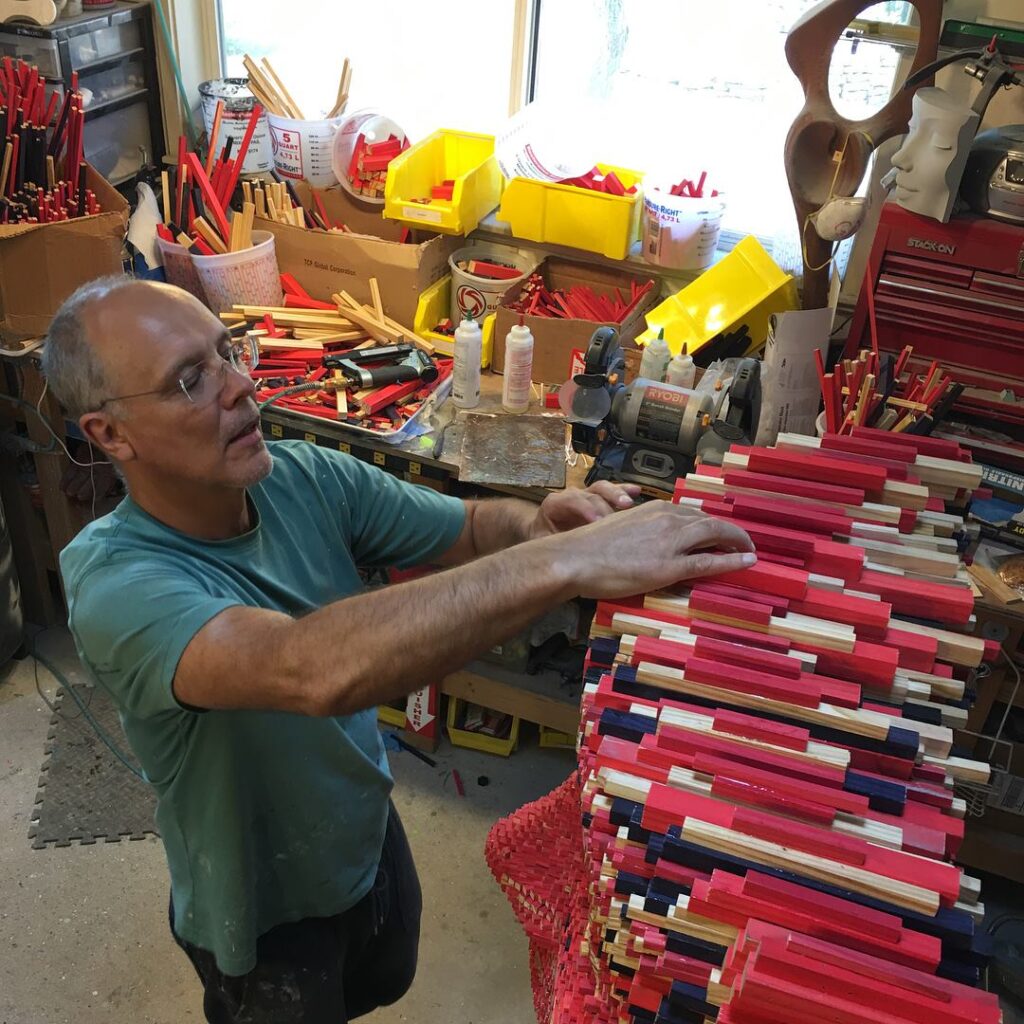
His understanding of structure comes from his early cabinetmaking roots – every curve and intersection is engineered with hidden precision. But the soul of the work lies in his painter’s sense of light and tone. When you walk around one of his pieces, it changes hue and texture as the light shifts, evoking the fluidity of both water and thought.
Human Faces in Motion
Bruvel’s Flow Series often features human faces woven from streams of consciousness. These aren’t traditional portraits – they are emotional landscapes, capturing states of being rather than identity. Some faces seem to smile inwardly; others gaze upward as if lost in reverie.
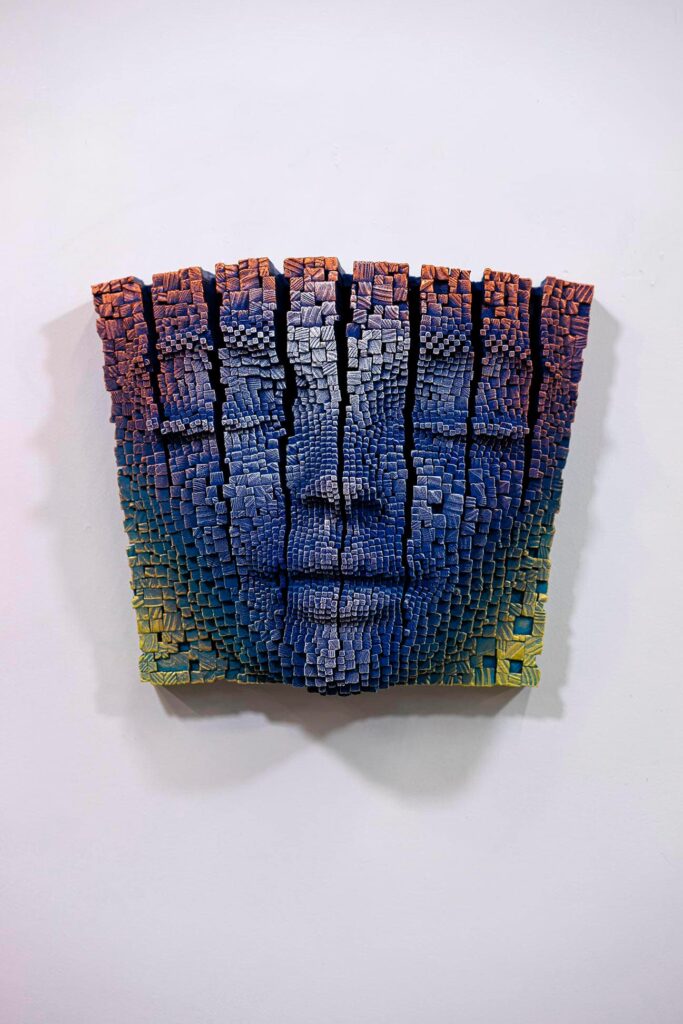
Viewed from one side, they look serene and meditative. From another, they fracture and dissolve, becoming pure movement. The effect is deeply human and deeply otherworldly.
He sometimes describes these works as “visual meditations,” physical embodiments of inner balance. They invite quiet observation – the kind that slows the mind down just long enough to notice how many unseen currents shape who we are.
Beyond Wood: Expanding Materials and Meaning
Although Bruvel became famous for his wooden sculptures, his curiosity has never been confined to a single medium. Earlier in his career, he explored bronze, stainless steel, and glass, blending classical techniques with futuristic design. His Bending the Lines series, for instance, turns stainless steel into ribbons that twist through space, reflecting and refracting the world around them.
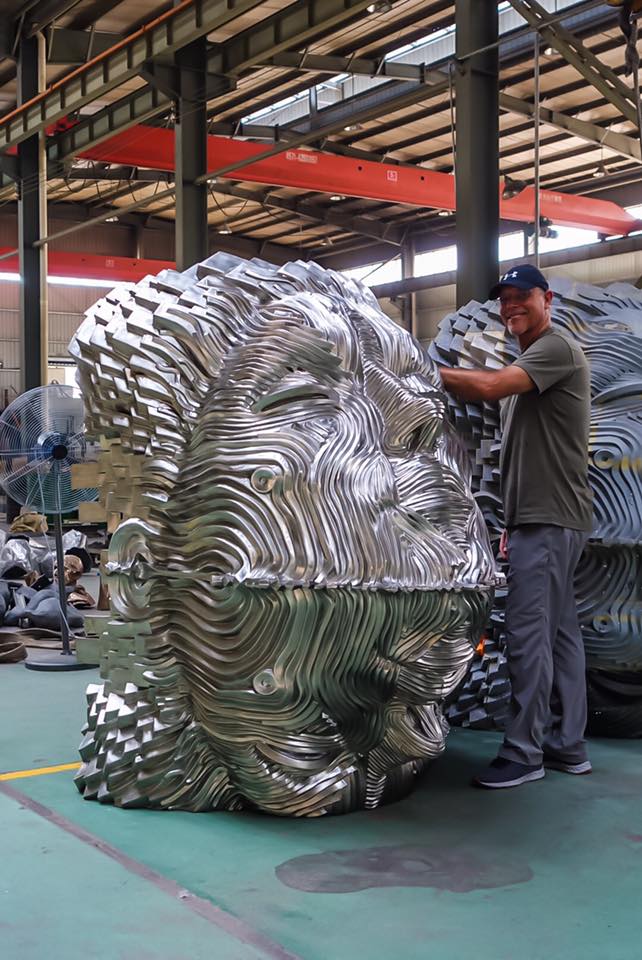
No matter the material, his theme remains constant: how energy and consciousness manifest in form. In that sense, Bruvel’s art feels almost spiritual – not religious, but reverent toward the interconnectedness of things – how thought, matter, and time intertwine.
The Artist as Craftsman and Philosopher
It’s easy to view Bruvel’s work as digital art made physical, yet that would miss the emotional undercurrent. His process is grounded in the slow, patient rhythm of craftsmanship – sanding, shaping, layering, repeating.
In interviews, he often compares this process to meditation: “Each strip of wood is like a breath. It’s repetitive, but it’s never exactly the same. It teaches you to let go of perfection and just stay present in the process.”
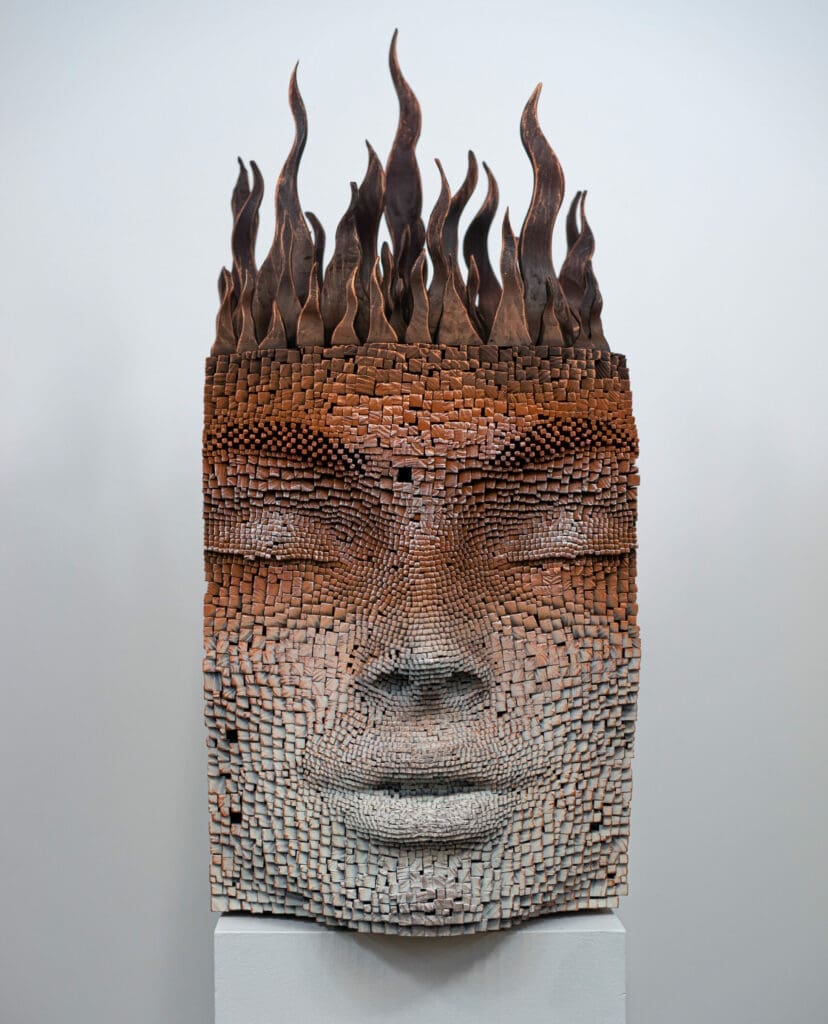
That philosophy runs through every piece he creates. His sculptures don’t just represent motion; they are the result of it – mental, emotional, and physical. They remind us that art, like life, is not static but always transforming.
Emotional Geometry
What sets Gil Bruvel apart is his ability to merge opposites: the warmth of wood with the cool logic of geometry, the softness of emotion with the precision of design. The balance feels almost architectural, yet never rigid.
His colour choices amplify that effect. Pale blues and violets evoke calm; deeper hues suggest introspection. Some faces appear illuminated from within, as though a quiet light were trying to escape the surface. Others fade into shadow, suggesting the complexity of the human mind – the seen and unseen, the said and unsaid.

Walking around one of Bruvel’s installations, you can’t help but feel drawn into its rhythm. The lines curve like sound waves, and your eyes follow them instinctively. It’s a dialogue between artist and viewer, material and motion.
Recognition and Impact
Over the past two decades, Gil Bruvel’s works have appeared in galleries and public spaces across the world – from New York and Los Angeles to London and Seoul. Collectors admire his ability to blend craftsmanship with futuristic vision. Critics note how his sculptures bridge design and philosophy, linking the analog and digital age.
But for many viewers, the appeal is simpler. His pieces feel alive. They make you pause, breathe, and notice the patterns of thought that ripple inside your own mind.

At a time when so much art aims to shock, Bruvel’s sculptures offer stillness. They whisper rather than shout, drawing you closer with quiet complexity.
The Poetry of Flow
Perhaps the best way to understand Gil Bruvel’s work is to think of it as visual poetry – each sculpture a stanza written in wood grain and light, each curve a metaphor for thought, motion, and the bridges between inner and outer worlds.
His work reminds us that creativity is fluid and ever-shifting, like the flow of water or the rhythm of breath. And like all good poetry, it leaves space for silence, reflection, and personal interpretation.

In the end, Bruvel’s art invites us to see the unseen – not just in his sculptures, but in ourselves. The waves of colourand form that define his pieces are mirrors for the quiet movements of human experience: joy, fear, serenity, longing.
As light moves across the wooden surface, the piece changes. So do we.
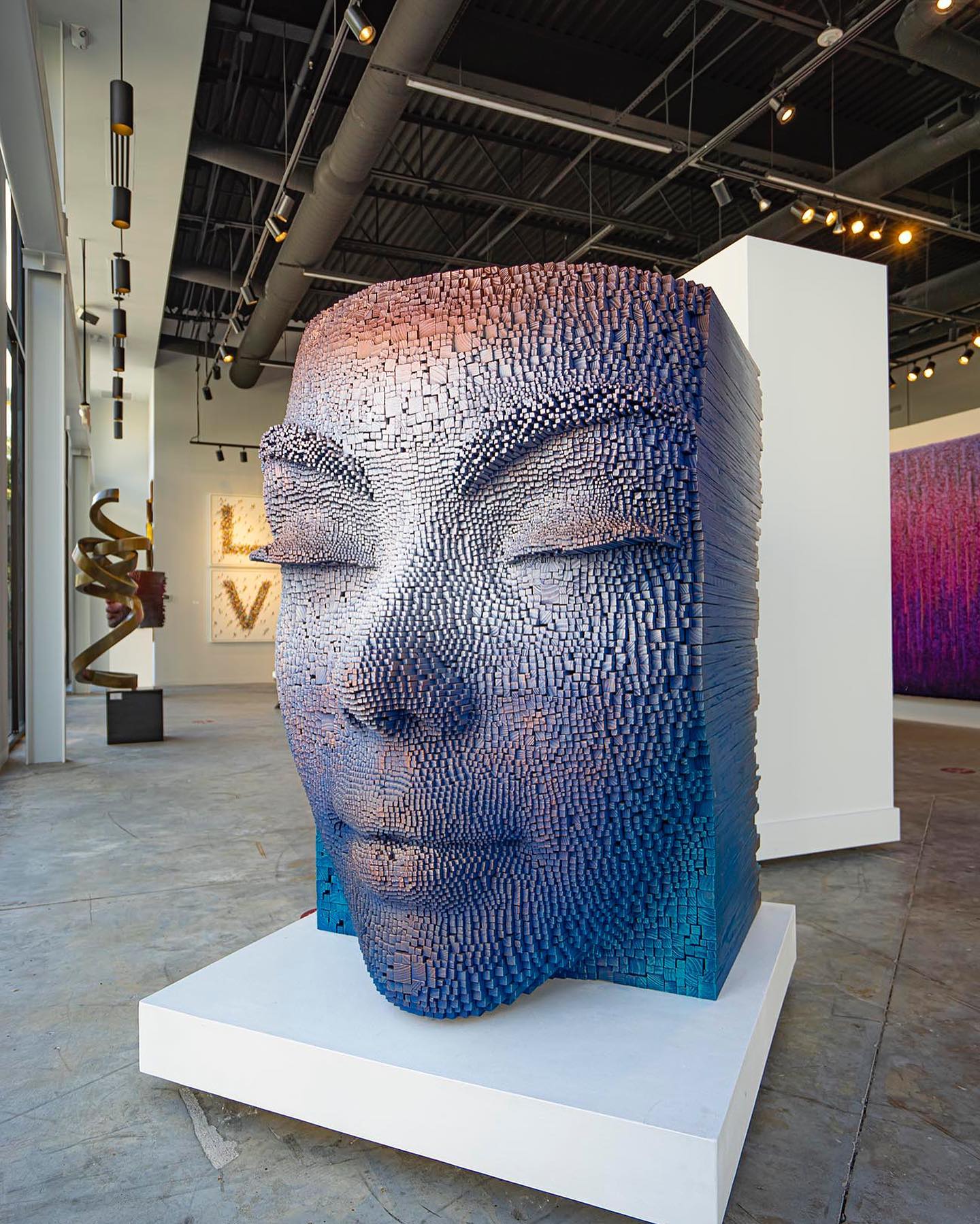
Reply